
The Beginnings of Candy Hogfish, Bodianus bimaculatus, Aquaculture at UF/IFASIRREC
via Rising Tide Conservation, by Grace Sowaske
Another new and exciting hogfish species is spawning at the UF/IFAS Indian River Research and Education Center aquaculture lab (Read about IRREC’s success with the Cuban hogfish, Bodianus pulchellus). In July 2022, the lab received eight broodstock fish from our partners, Segrest Farms.
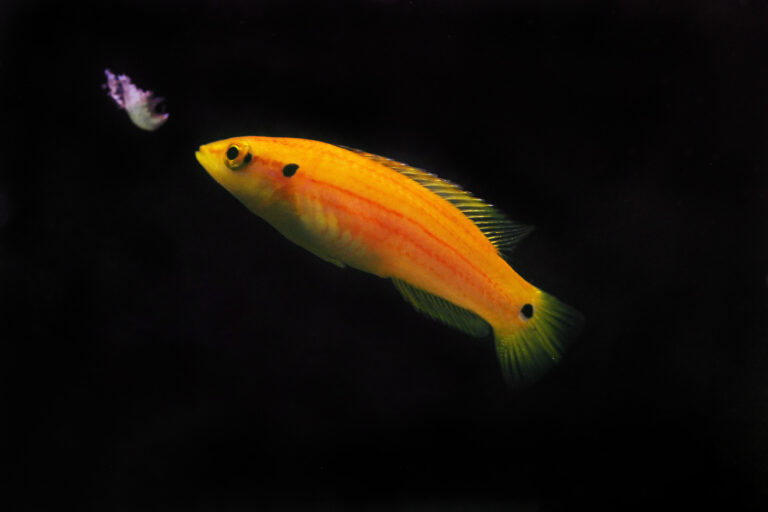
In September, the two males (presumed based on being larger than the others), were setup in harems, one harem consists of one male and four females and the other with one male and two females. By December, both harems were observed spawning for the first time!
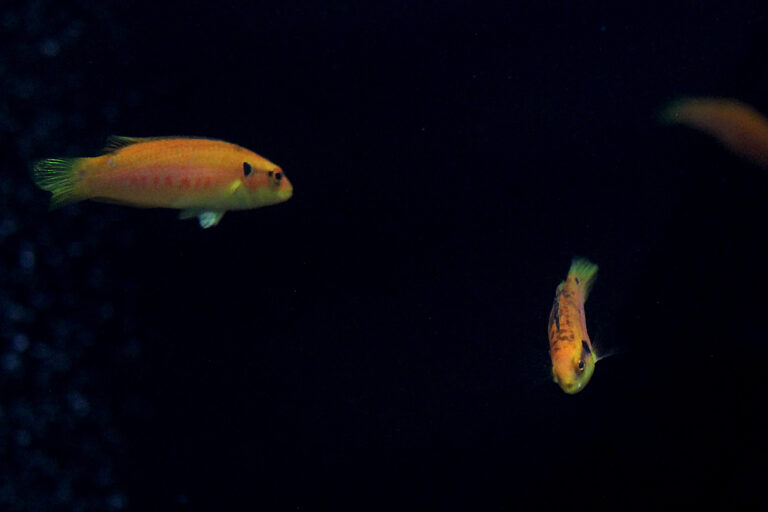
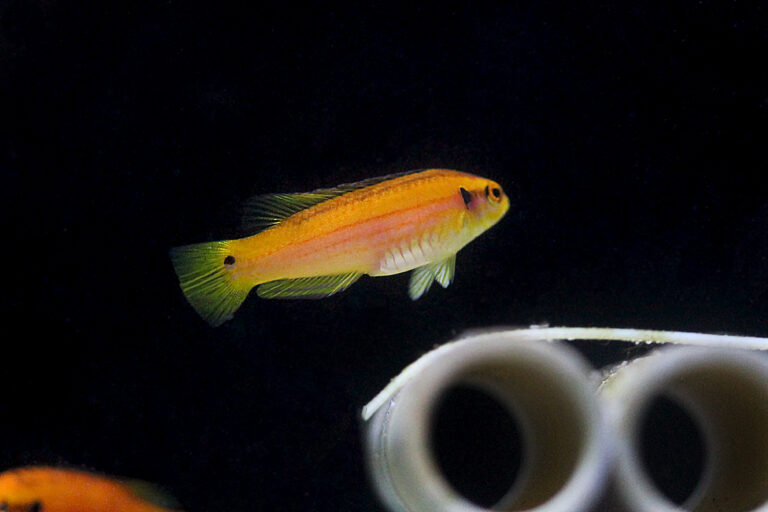
Further investigation of the sexual dimorphism and spawning of these harems has uncovered there are subtle pigmentation differences between males and females. These differences begin once the bright yellow juveniles develop their stripes. Males can be distinguished by darker coloration on both sides of the dorsal fin and appear more pink with red lines versus females which are more orange as
their red lines develop. Daily egg collection graphed below reveals that both harems are spawning every day with batches ranging from 100-600 eggs with fertility rates from 2-57%.
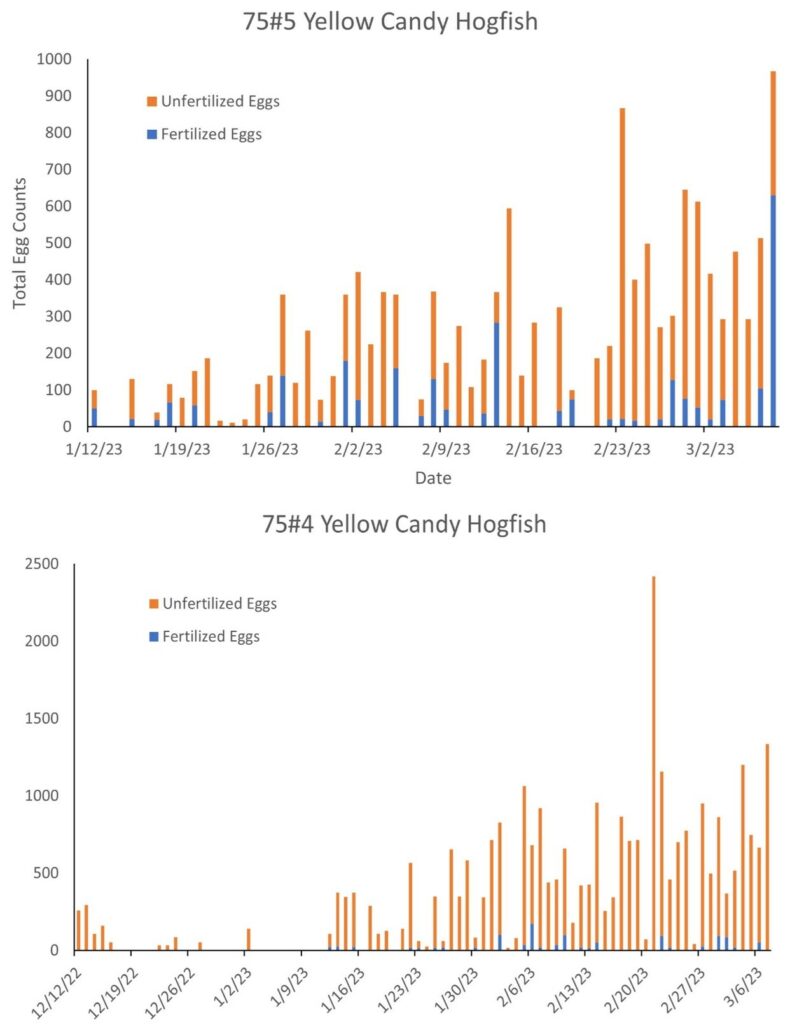
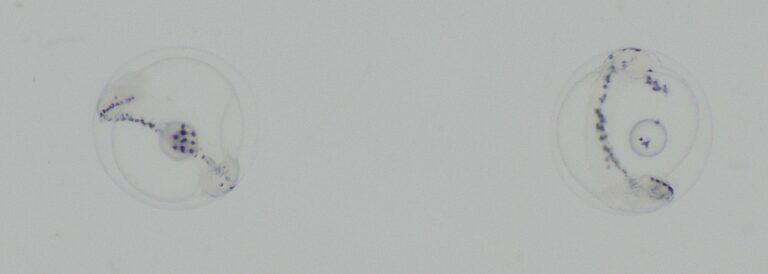
These small larvae are approximately 2mm long at hatch and have been observed to be fast developers compared to other pelagic spawners. Eye spots are developing by 1 day post hatch (DPH) and a mouth and digestive tract 2 DPH. With limited numbers of fertilized eggs to work with, this species has yet to be cultured past 6 DPH.
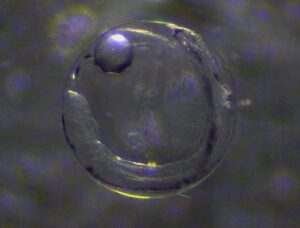



Researchers are also encountering another frustrating problem with these harems—they are eating their own eggs. In the video below, you can see that immediately after spawning, the parents are voraciously chowing down.
To combat the broodstock egg buffet, the research team has doubled the size of afternoon feedings and turned up the flow in the tanks.
The successful spawning, fertilization, and larval development of the candy hogfish are all green lights for the success of this species. Rising Tide is rooting for the researchers at IRREC to make it to the finish line.
Content and photos provided by Dr. Cortney Ohs and Morgan Bronson of the UFIFAS Indian River Research and Education Center and compiled by the author, Grace Sowaske.
###




